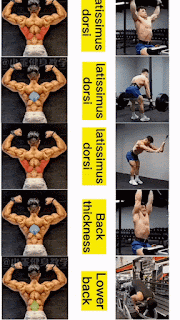Building bigger forearms involves targeted exercises and consistent training. Here are some effective strategies to help you increase forearm size:
1. Wrist Curls:
- Execution: Sit or stand with a dumbbell in hand, palm facing up. Rest your forearm on a bench or your thigh. Lower the weight by extending your wrist and then curl it back up.
- Variations: Perform wrist curls with a barbell or use a wrist roller.
2. Reverse Wrist Curls:
- Execution: Similar to wrist curls but with the palm facing down. Lower the weight by extending the wrist and then curl it back up.
- Variations: Perform reverse wrist curls with a barbell or using a reverse wrist roller.
3. Farmer's Walks:
- Execution: Hold a heavy dumbbell or kettlebell in each hand and walk for a certain distance. Keep your grip tight throughout.
- Benefits: Farmer's walks not only target the forearms but also engage the entire upper body.
4. Grip Strengthening Exercises:
- Captains of Crush Grippers: Use grip strength tools like Captains of Crush Grippers to specifically target and strengthen your grip.
5. Deadlifts:
- Execution: Deadlifts engage the forearms, especially with heavier weights. Ensure proper grip and form to avoid injury.
- Variation: Use double overhand grip, mixed grip, or hook grip to challenge your forearms.
6. Pull-Ups and Chin-Ups:
- Execution: Hanging exercises like pull-ups and chin-ups engage the forearms. Ensure a full range of motion for maximum benefit.
- Variation: Towel pull-ups involve gripping towels instead of a bar, intensifying the forearm workout.
7. Hammer Curls:
- Execution: Hold a dumbbell in each hand with a neutral grip (palms facing each other) and curl the weights up.
- Benefits: Targets the brachialis and brachioradialis, contributing to forearm development.
8. Plate Pinches:
- Execution: Pinch two weight plates together and hold them for as long as possible. Gradually increase the weight for progression.
- Benefits: Improves pinch grip strength.
9. Wrist Roller Exercises:
- Execution: Use a wrist roller device with a weight attached. Roll the weight up and down by winding and unwinding the rope.
- Benefits: Excellent for developing forearm endurance and strength.
10. Consistent Training:
- Frequency: Train your forearms regularly, at least 2-3 times per week, to allow for proper recovery.
- Progressive Overload: Gradually increase the resistance or volume over time to challenge your forearms and promote growth.
Tips for Forearm Training:
- Focus on Form: Ensure proper form to target the forearms effectively and prevent injury.
- Warm-Up: Warm up your forearms before engaging in heavy lifting to prepare the muscles and joints.
- Full Range of Motion: Perform exercises through a full range of motion to maximize muscle engagement.
Remember that genetics play a role in muscle development, so individual results may vary. Consistency, proper nutrition, and adequate rest are crucial for overall muscle growth, including the forearms. If you have any existing health conditions or concerns, consult with a fitness professional or healthcare provider before starting a new exercise program.
Join the Sports Nutrition Revolution.
.gif)

.gif)

.gif)

